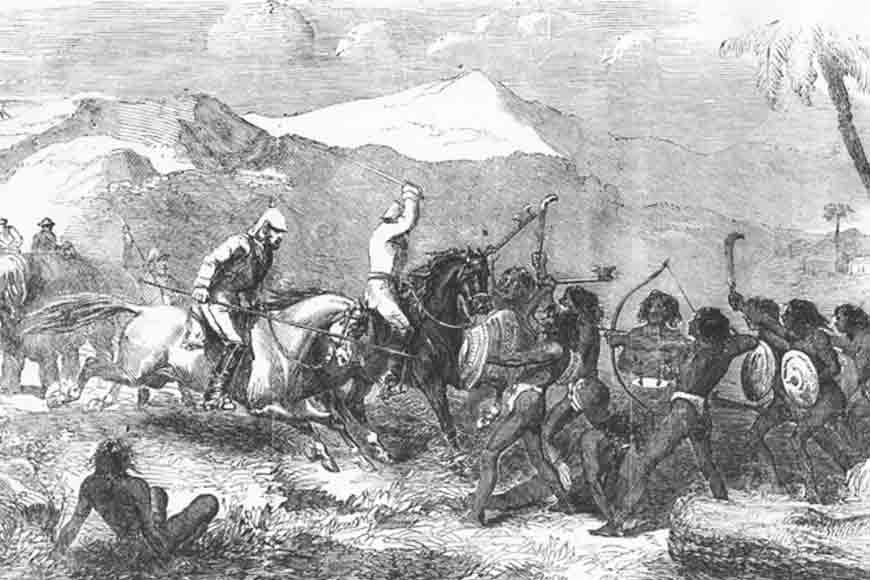Why is pre-1857 Santhal revolt of Bengal never mentioned?

Just two years before the revolt of 1857, there was another revolt that rose from the tribal belts of Bengal where tribes fought with bows and arrows against the British and their agents, the Zamindars. Sadly, this great Santhal Revolt, fought in the jungles of Bengal hardly ever found mention in history books of India. But this uprising was of immense importance, as the root cause behind it, later led to the infamous Naxalite movement in independent India that was born again in these tribal belts.

After the Battle of Plassey in 1757 CE, the control of Bengal passed to the British East India Company. A large chunk of the area inhabited by Santhals came under British rule. Soon the British began to clear the forests to grow cash crops such as jute, poppy and indigo. This was followed by the introduction of the famous ‘Permanent Settlement’ or the Zamindari system by Lord Cornwallis in 1793 CE. Under this ‘settlement’ it was agreed that landlords would have perpetual and hereditary rights over the land, so long as they paid a fixed revenue to the British Government.

To create this new breed of Zamindars, the British auctioned away large tracts of land belonging to the Santhals, to anyone who would guarantee them these fixed revenues. A lot of rich Indians based in cities bought zamindaris in these far-off forests and started exploiting people there. With the introduction of the Zamindari system, the Santhals lost all rights to their land. They were reduced to hired labourers working in the fields for these new ‘landlords’. Another great blow to the Santhals was the introduction of currency. Santhals followed the barter system, but the Zamindars had to be paid in cash. This meant that they had to borrow money at very high interest rates from money lenders.
As years passed things got worse. The exploitation at the hands of the local zamindars and the British led to an armed revolt. The Santhal rebellion of 1855 CE was called Hul, which in the local language means a movement for liberation. This rebellion was headed by the four brothers of the Murmu clan - Sidhu, Kanhu, Chand and Bhairav and their two sisters Phulo and Jhano.

On 7th July, 1855 CE, a huge number of Santhals assembled in a field in Bhognadih village. They declared themselves free and took an oath under the leadership of Sidhu Murmu and Kanhu Murmu to fight till their last breath, against the British and their agents. This act of the Santhals sent alarm bells ringing and the British sent a police agent who tried to arrest the brothers. The Santhals reacted violently to this and killed the police agent and his companions.This triggered a series of conflicts between the English East India Company’s army and the Santhals leading to a full-fledged war. The Santhals captured a large tract of land extending from the Rajmahal Hills (in Jharkhand) to Bhagalpur district (in Bihar) to Birbhum (in West Bengal). The rebels decided to drive out the money lenders and Zamindars. There were killings on both the sides and the local British administrators sheltered themselves in the fortification in the Pakur town of Santhal Pargana to save their lives.
The once tribal protest over land has become a violent and vicious guerilla war, even today, burning through the heart of India - the Red Corridor - as it is called. Thousands of innocent people have been killed in a battle that seems nowhere near an end!










